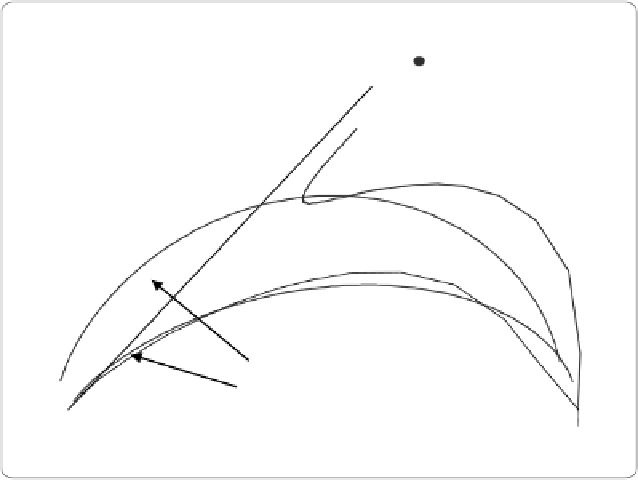Geoscience Reference
In-Depth Information
sand deposits could be obtained, except that in this case the behavior undergoes an
intermediate stage of lacunal geometry collapse.
On an undrained path, the collapse effect is replaced by a pore pressure increase.
Indeed, since its tendency to re-arrange itself into lumps (intra-lumps class) does not
compensate for the tendency of the lacunae (inter-lumps class) to collapse, the
lumps “disintegrate” and we are left with the possibility of static liquefaction.
The principal tendency, until a stress of about 1 MPa, could be “collapse” or
“liquefaction”, not compensated for by the re-arrangement of the relatively
consolidated lumps. We could, therefore, talk about a “new” critical state of the
“collapsible” arrangements. This may be what is called the “steady state line” or
SSL. It is characterized, in the (
e
- log
p'
) plane by the Castro SSL or by the SSL
curve [ISH 93].
5.8.2.
The Roscoe model applied to lump sands
The Roscoe equation [5.23] on the undrained path (see Figure 5.17) gives the
bell-shaped curve for an equivalent
C
c
of 0.08 (slope of the Castro SSL) and the
above curve, for
C
c
= 0.20.
q/p'
ioc
1.0
M=1.4
0.8
0.6
10
0.4
6
Rosco simplifié
M = 1.4 -
Simplified Roscoe
0.2
Cd=0.3
Cc = 0.2
Cc =0.08
0.0
0.0
0.2
0.4
0.6
0.8
1.0
p'/p'
ioc
Mekkaoui-Flav-qp'c-2004
Figure 5.17.
Simplified for Cc = 0.2 and 0.08
























Search WWH ::

Custom Search